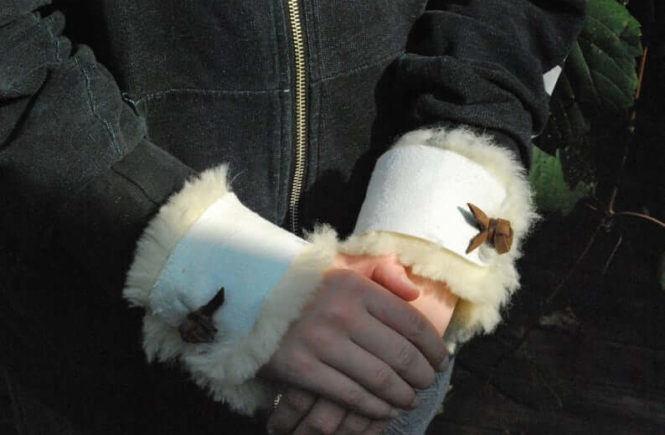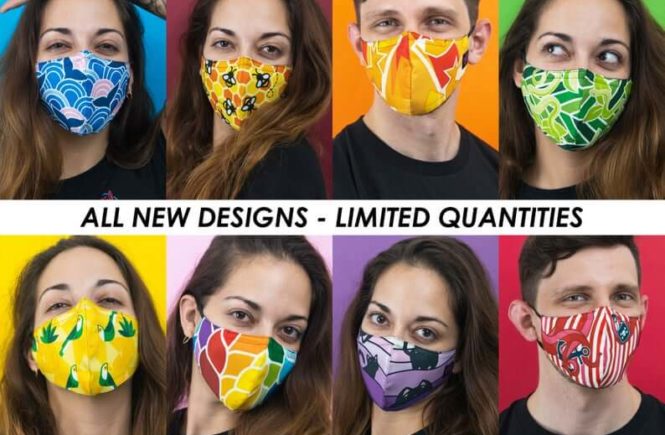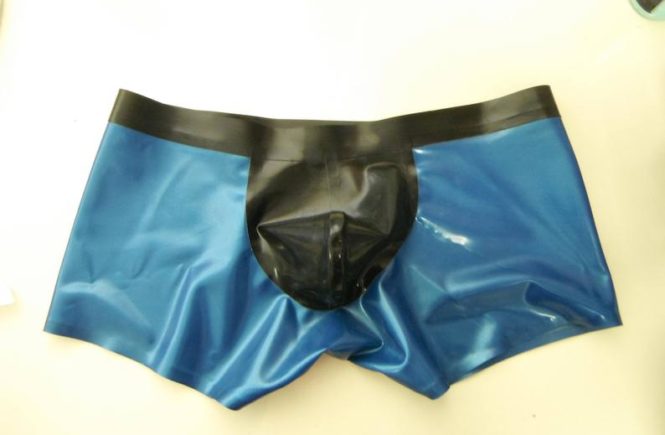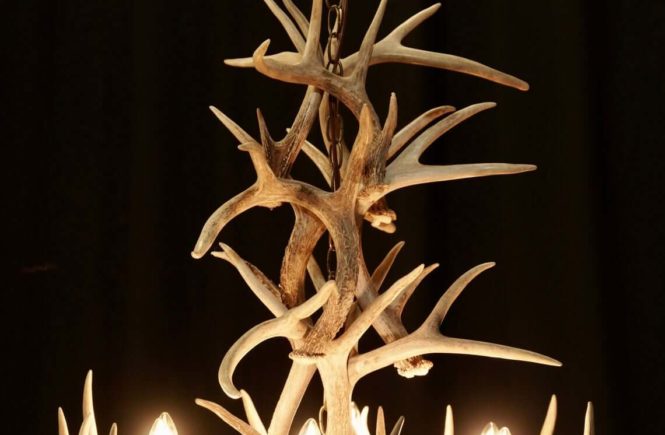[vc_row][vc_column][vc_message]Niche : Home and Living
Shop link : https://www.etsy.com/shop/BoundingJoy[/vc_message][/vc_column][/vc_row][vc_row][vc_column][vc_column_text]
Tell us something about yourself. What is your niche? How did you get your idea or concept for the business?
I have always been fascinated by nature; especially my relationship to it and my own place in the natural world. As a natural progression of that mind-set, I am a true animal lover and down-right fanatical about allowing animals to exist in my world as naturally as I can afford to allow them to. I take very seriously the great commission to manage them responsibly and lovingly. I acknowledge their instinctual needs as well, and seek to satisfy them within the confines of our modern world. THAT is what first inspired me to make pet toys out of natural furs and hides; seeing the pure joy as my pets react to the toys I give them and their clear satisfaction at being able to play freely within their natural tendencies. I have purchased enough artificial and synthetic pet toys to know that the effect is not the same and that the durability of my investment in those synthetic toys is short-lived and costly. With synthetics, I quickly end up with a frustrated pet and a useless pile of rubbish that will not soon decompose. With natural materials, albeit a bit more expensive at the outset, I have a pet that delights in the smells and instinct-satisfying nature of their toy, and biodegradable pieces to compost after many, many hours of engaging play. With three dogs and a cat in my household, my nature-based toys have truly been put to the test, so I am able to state with confidence that I have a good product. In the same vein, I have recently begun creating very basic warming comforts for humans as well. They, too, aim to honor what works so well in nature, and which synthetics can never fully replace. Those products (at this time, pulse warmers, insoles, and hunter’s scarves) are based on ancient human wisdom and lessons learned for combatting the elements as the singularly hairless species of the animal kingdom that we are. Everything I make is simply crafted and non-fussy; first, to honor the arts and ingenuities of traditional craftsmanship, and second, to endeavor to make them universally appealing and functional for all.
What are your responsibilities as a business owner?
As with all things in my life, I feel it is vitally important to be forthright and honest. My ads do not make claims that I cannot or am unwilling to stand behind. I have to acknowledge the potential for someone else to have a different experience from my own and strive to write my ads from a perspective of objectivity and responsibility. I am most comfortable writing in a conversational and interactive style but have also tried on other writing styles in an attempt to capture a larger audience. I feel very fortunate that Etsy.com encourages and advises me in marketing and actually tracks search and response data for those who visit my shop through the platform. I make sure to review this data and then to tailor my ads to those searches that appear most frequently. I have seen a surge in interest since beginning to do so. I want to ensure a satisfied customer as well, both for the sake of Etsy.com and its reputation, as well as for my own benefit, so I am very conscious to fill all orders as soon as possible. I make it my goal to be ahead of the expected ship date Etsy.com communicates to my customers. I offer free shipping to reduce the perceived barriers to people making a purchase while they are in the moment and the mood for my products. When a sale is concluded, I make sure to pack my products in clean presentable packaging that assures the customer that I am a professional. I keep track of all associated paperwork and postal communications to be able to address any issues, should they arise, and I keep a record of my business expenses and income to be able to report my taxes in an orderly manner.
[/vc_column_text][/vc_column][/vc_row][vc_row][vc_column width=”1/3″][vc_single_image image=”100002777″ img_size=”737×737″ onclick=”link_image” css_animation=”appear” bb_tab_container=””][/vc_column][vc_column width=”1/3″][vc_single_image image=”100002776″ img_size=”737×737″ onclick=”link_image” css_animation=”appear” bb_tab_container=””][/vc_column][vc_column width=”1/3″][vc_single_image image=”100002775″ img_size=”737×737″ onclick=”link_image” css_animation=”appear” bb_tab_container=””][/vc_column][/vc_row][vc_row][vc_column][vc_column_text]
What are your best selling products, what type of materials are used in your creations, how do you design your products, what makes your products stand out?
I am quite new to Etsy.com, so my product list has been steadily evolving. I have received pretty much equal interest in two of my pet toys; the lambskin treat pocket squirrel with a fluffy real fur tail, and the squeaky toy crosses I make out of medical-grade sheepskin remnants. I am enjoying a modest success selling sheepskin insoles from the same material, and have also sold pieces of that sheepskin that are slightly smaller than what I can use in my own design pursuits so that other crafters and creative people can afford to play with it as well. I set it as my goal, right from the first design, to use only leftovers, discards, and responsibly- harvested animal skins. I want the joy found in my products to be pure and not clouded by thoughts or concerns for the origin of the materials or the environmental impact of using those materials. I have sought outsources for manufacturing discards, and landed with very high-quality sheepskin and furs that, because of their remnant status, are also unusually affordable – a benefit I make sure to pass along to my customers. It makes my products both unique and highly price-competitive. Their remnant nature also requires me to approach each piece as unique; seeking the best use to honor each natural hide and resulting in a one-of-a-kind folk art object, as opposed to being mass-produced and lacking individuality.
What do you enjoy most about being an entrepreneur? What’s the hardest about it?
I am following a dream I have had for decades. I thoroughly enjoy the freedom I have to explore ideas and present them to a public audience. The hardest part is waiting for the feedback I get via sales numbers and customer comments. I discipline myself to see every moment as a potential learning opportunity and have made up my mind to take every chance to learn.
Who do you sell to (and how do you get customers)? What marketing tools or strategies you use to boost your sales? Are you satisfied with the results?
I have written my ads for Etsy .com in several different voices or styles, in hopes of making a verbal connection with a wider audience of pet owners and natural sheepskin enthusiasts. I do not have a photo studio, nor am I an accomplished photographer. My back yard has been my studio and my dogs have been my sales demonstration models. I have had to use a photo-story format to convey their joy in playing with the toys I create for them, rather than making the recommended video sequences, while I wait to acquire a video-capable camera. I expect that my ads look very unique as a result of this, and I am hopeful that my photo-stories are also appealing to Etsy.com customers. In another arena of sales, I recently was able to attend an open-air festival and do some one-on-one marketing and demonstration. The day was a chilly one, so it was fairly easy to convince people to try and then fall in love with my pulse-warmers. I passed out business cards and offered a month-long festival-based discount (24% off to mark the 24th anniversary of the event) to be obtained by putting a special password into their cart on Etsy.com. That garnered me valuable word-of-mouth advertising, increased sales, and overall increased awareness of my Etsy.com shop.
Do you believe there is a winning formula for becoming a successful entrepreneur? What is yours?
I think everyone has their own definition of what a winning business formula is. As for me, I am sure that it involves integrity, accountability, and the ability to imagine my products from a wide variety of customer perspectives. I expect that, over time, I will learn from my customers what I do that pleases, and what I do that is not appreciated. I fully intend to be open to those lessons and to make necessary adjustments as I move forward in my business venture.
What was the toughest moment you have experienced in your business practice? How did you succeed to get over it and move forward?
Fortunately, I have not had too many stumbling blocks. I have moved forward cautiously; adding products and inventory only as my budget allows for the increase, and thoroughly testing my products before making any sales claims about them. One thing I see as a genuine concern going forward will be to find a consistent and reliable supply of my base materials at a similarly-affordable price. I have been working within the confines of a COVID – defined frugality and can only hope that my small business suppliers are able to survive the economic storm that is crashing upon them.
What inspires you when you’re creating? How do you get ideas for new products? What are some methods or tools you use to get creative?
I am a very tactile-inspired person. I touch the materials I want to work with. I play with their properties and limits and explore their suitability for the purpose I have in mind for them. Often, as it regards my pet toys, I do this while I am observing my pets at play. I then think about all of the basic craftsmanship skills I can apply to create the object or toy I am inspired to make. I make samples, play with, and re-design my ideas until they become practical durable pieces of art. I allow my pets to test and interact with my creations and re-design again if I note a weakness or deficiency in that design. For my people-warmers, I test things myself and enlist my family’s aid and opinion to develop that product that best suits the stated need or desire. I am a lover of traditional craftsmanship and the history of man-made consumables. I research and apply this knowledge to the objects I am designing. This means I use traditional tools, punches, needles, and the like, and I seek out historic solutions and tools created long ago to solve a particular problem in the manufacture of an object. As an example: I was frustrated by the process I was using to thread leather laces through punched holes in the sheepskin, so I researched historic ways of accomplishing this task, and landed upon instruction on how to make a tool to assist me. I made the tool, and immediately experienced ease in my assembly process.
Do you ship your product internationally? How do you handle postage pricing? What is the average time it takes from the order to the delivery? Do you use free shipping? If so, why? How do you package your products?
I have, thus far, chosen to not do international shipping. I wanted to be able to offer universal free shipping in the United States as a way to diminish the barriers shoppers meet when evaluating the total cost of a purchase. As a fledgling business, I did not want to try and mix postage styles or find myself with unexpectedly large postal fees for international shipping. As I grow a stronger presence and sales book I expect that this will change. I am currently utilizing the Etsy.com discount contract with the USPS. I am able to print labels, package, and ship my products from the convenience of my home. I have gone to great lengths to select professional-yet-economical and environmentally responsible packaging to send my products in. I want my customers to know that I care to ship their purchases in a protected, professional, and conscientious manner. I include a (currently) homemade note of thanks and the purchase invoice in each order I ship. I invested in packaging tape that will allow me to securely seal each package, and make sure that all gaps are taped closed on each box.
[/vc_column_text][/vc_column][/vc_row][vc_row][vc_column width=”1/3″][vc_single_image image=”100002774″ img_size=”737×737″ onclick=”link_image” css_animation=”appear” bb_tab_container=””][/vc_column][vc_column width=”1/3″][vc_single_image image=”100002773″ img_size=”737×737″ onclick=”link_image” css_animation=”appear” bb_tab_container=””][/vc_column][vc_column width=”1/3″][vc_single_image image=”100002771″ img_size=”737×737″ onclick=”link_image” css_animation=”appear” bb_tab_container=””][/vc_column][/vc_row][vc_row][vc_column][vc_column_text]
What would you say are the key elements for starting and running a successful online business?
I am so new to this that I have not yet branched out into an independent web page for my shop. Etsy.com does provide a lot of guidance material for doing this, though. These things are yet to be studied and will come with time. I am currently enjoying, and exceedingly thankful for, the easy format Etsy.com provides me to begin my business adventure in such a trouble-free and well-advised manner.
What advice would you give to other entrepreneurs who are starting out?
It is surprisingly easy to open an Etsy.com shop. My only cautions are the following: assure that you have a reliable supply of source materials for what you want to make and sell, determine that you have the required time to produce your product and sufficient space to keep a modest inventory, and dedicate time each day to monitoring your Etsy.com Dashboard in order to be immediately aware of questions or sales that require your attention.
How do you personally define business success? Is it money? Freedom? Influence? Creative expression and innovation? Something else?
Business success for me is a combination of all of the above, and something more. I will know that my business is a success when I have sufficient business to require and be able to sustain, meaningful jobs for other people in my employ. My business will be a success when its products make a positive difference in other people’s lives, and when it affords my family a measure of financial autonomy and peace of mind for a dependable source of future income. The freedom and security to bravely explore and present new product ideas to an enthusiastic customer base wouldn’t be bad either, as it would allow me and my employees opportunities for creative expression and innovation as well.
Describe your day-to-day operation. How do you manage your time?
I am currently juggling many hats. My business is squeezed into the time that remains once the needs of children, husband, and household have been attended to. I am very good at multi-tasking and plan several quiet interludes each week to focus on the needs of my business. I review my dashboard at least twice daily (morning and night) and prepare ahead for the coming day when I know what to anticipate.
How do you plan on growing your business? What is the biggest impact on your profitability?
I have hope that my products will enjoy increased visibility, attention, and rate of purchase as we approach the Holiday shopping season. I seek out and stay aware of opportunities to place my toys with people and places of business that are both positive in demeanor and vocal in their opinions. I do seek objective feedback and strive to donate a product that will be favorably received so that the good news can be shared further. I have asked independent professionals and a veterinarian to review my products for safety concerns without an offer of remuneration, and they have willingly done so. They were pleasantly surprised to be gifted my products after I received their honest and objective reviews. Their joy translates to good words being spoken about my products in the future. The biggest impact on my profitability will, without a doubt, be an uninterrupted supply of my materials at their current prices. Another huge impact will be on whether my investment in an industrial sewing machine will cut my production time, but at the expense of the durability of my current product. Handmade is still better, but the production time is considerably longer. I will have to find the practical balance between these two processes and explore techniques for making a machine-stitched product the most durable it can possibly be.
What are some things you did to set your shop for success on Etsy? What is one lesson you learned the hard way?
I did a lot of research and comparison for products similar to what I knew I wanted to sell. I tweaked both my products and their presentation so that they would stand apart from other similar products for sale all over the internet. Long ago I learned not to make claims you can’t support and that you must thoroughly test your product in the environment it is intended to be used in, as well as other adjacent environments that someone might try to use them in. As an example; my sheepskin toys are not only appealing to pets, they are also clearly appealing to small children and memory care patients. I had to make sure that my toys would not be easily picked apart in their busy hands as well. I have also learned to keep the ad-stated inventory on hand – for each ad, I have listed – and not try to double-up. If I have pictures for a product that looks a certain way, I need to make sure I have enough of the product that actually looks that way, and not tries to make more later. It is far too easy to mistakenly use those materials for other projects.
Anything you wish to add, feel free to do so here. We value your opinion
I am very thankful for the opportunity to be featured on the Storepreneur website and on your link to Pinterest. I am hopeful that you choose to feature me will be beneficial to you as well as to me.
[/vc_column_text][/vc_column][/vc_row]




